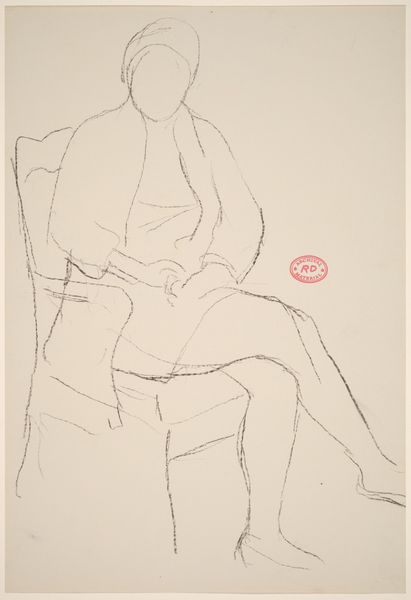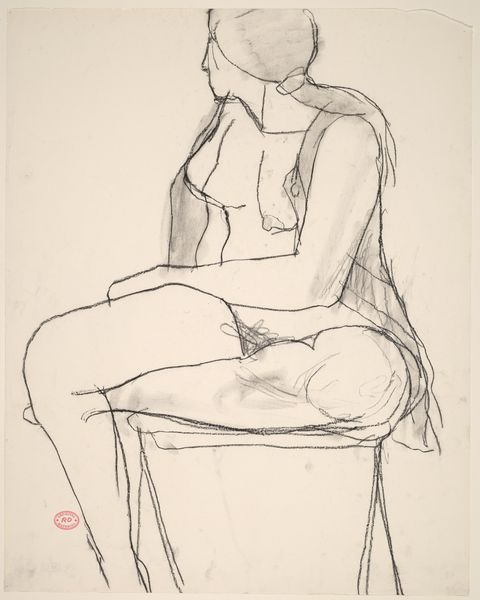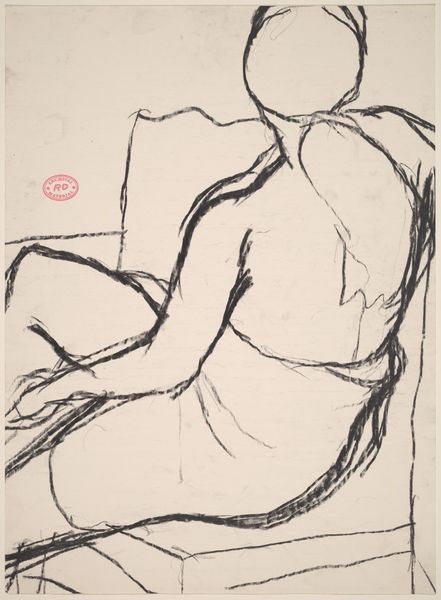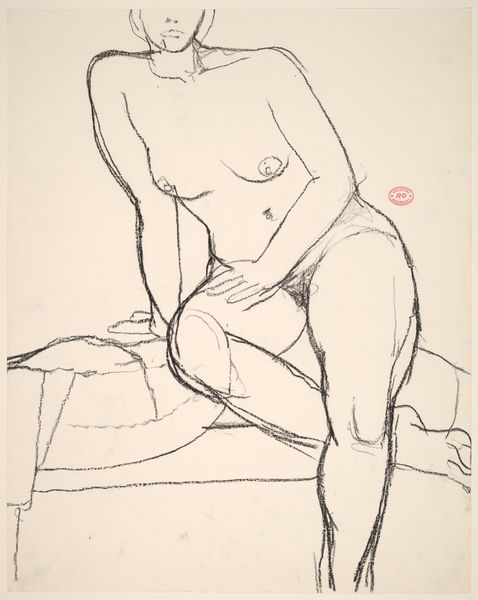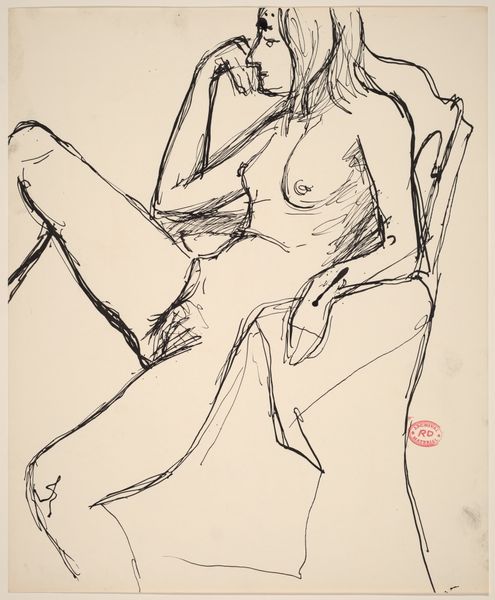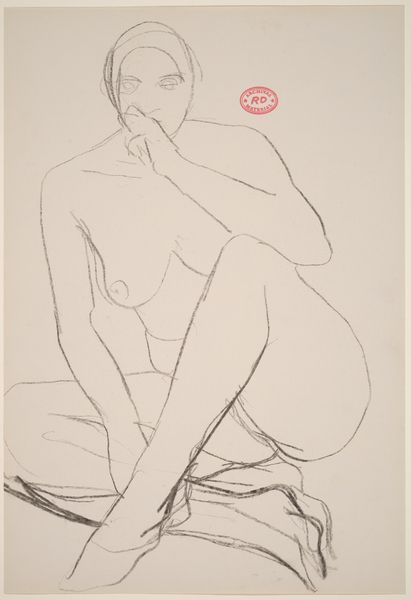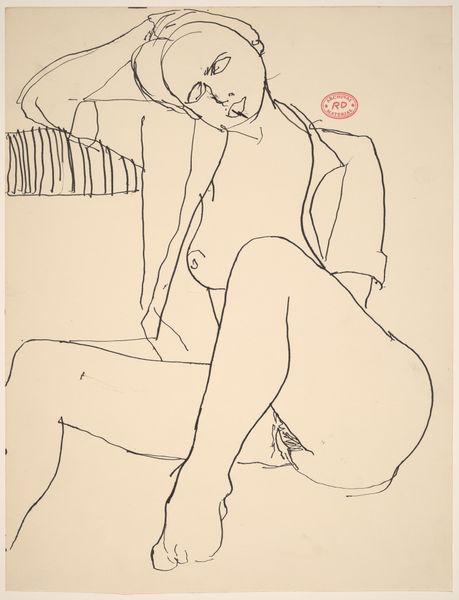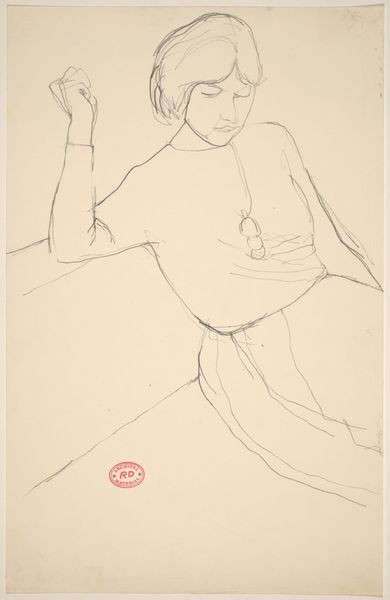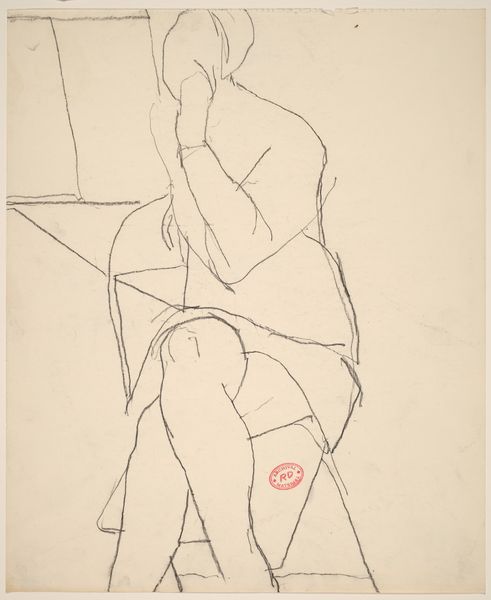![Untitled [seated nude with her right foot on the chair seat] by Richard Diebenkorn](/_next/image?url=https%3A%2F%2Fd2w8kbdekdi1gv.cloudfront.net%2FeyJidWNrZXQiOiAiYXJ0ZXJhLWltYWdlcy1idWNrZXQiLCAia2V5IjogImFydHdvcmtzLzhlNDllMTI0LTc4YTItNGYzZS1hZGUyLWI5YjQ5Y2IwY2EzMi84ZTQ5ZTEyNC03OGEyLTRmM2UtYWRlMi1iOWI0OWNiMGNhMzJfZnVsbC5qcGciLCAiZWRpdHMiOiB7InJlc2l6ZSI6IHsid2lkdGgiOiAxOTIwLCAiaGVpZ2h0IjogMTkyMCwgImZpdCI6ICJpbnNpZGUifX19&w=3840&q=75)
Untitled [seated nude with her right foot on the chair seat] 1955 - 1967
0:00
0:00
drawing
#
drawing
#
figuration
#
bay-area-figurative-movement
#
abstraction
#
line
#
nude
Dimensions: overall: 60 x 49 cm (23 5/8 x 19 5/16 in.)
Copyright: National Gallery of Art: CC0 1.0
Editor: Here we have Richard Diebenkorn's "Untitled [seated nude with her right foot on the chair seat]," made sometime between 1955 and 1967. It's a charcoal drawing, and I find the sketch-like quality quite intriguing. The lines are so simple, yet they capture the figure’s pose. How do you see this work in its historical context? Curator: It's interesting that you mention the 'sketch-like' quality. Diebenkorn made this work in a period where the figure, especially the nude, had a long and often fraught history in Western art. It comes after periods of great abstraction but also represents a time when art institutions debated on what kind of imagery was accepted. How do you think Diebenkorn’s choice to present a casual, rather than idealized, nude affected its reception? Editor: I suppose it feels more…real. Less about some classical ideal, more about the everyday. Perhaps it made it more accessible. Do you think the 'unfinished' quality, the visible lines, challenges the established notions of artistic skill within the art world at that time? Curator: Precisely. By leaving the process visible, he rejects the slick, polished aesthetic promoted by certain powerful galleries, allowing for a democratisation of skill. Also, consider what the 'Untitled' choice contributes. It almost suggests a reluctance to make definitive statements, instead inviting personal interpretations in contrast to institutional framing. Do you feel it is successful? Editor: Absolutely. It’s thought-provoking how his artistic decisions reflect broader debates on art’s role and accessibility in society. It made me reconsider who gets to be represented, and how. Thanks. Curator: Indeed. This piece serves as a reminder that artistic choices are not made in a vacuum; they are intertwined with socio-political dialogues that continue to shape our perception of art today.
Comments
No comments
Be the first to comment and join the conversation on the ultimate creative platform.
